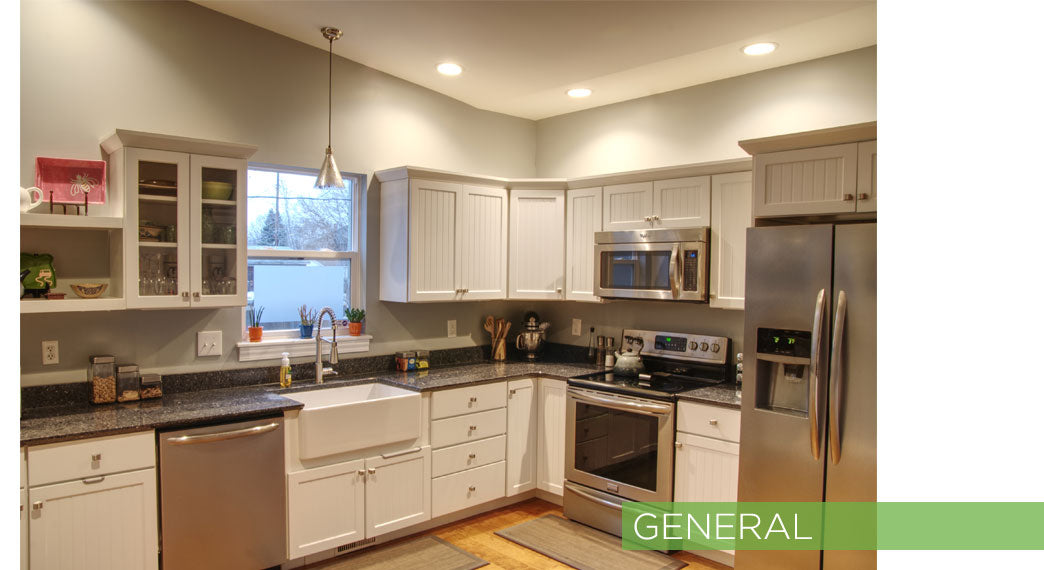Layering lighting is the idea of using a variety of different lighting techniques within a single space at the same time. Doing so successfully will provide depth and character to the space, making it more pleasing visually and inviting to be in. Each singular lighting technique will illuminate a particular zone or feature but combined, the result is truly greater than the sum of its parts.
The most used lighting techniques are general, accent, and task lighting. Let's break down each one in this example kitchen application and see what the effects are.
Single Layer: General Lighting:
General lighting, also usually called ambient lighting, provides the overall illumination of a space. This lighting does not focus on a particular feature or task. The light merely blankets the entire space with light, usually from the ceiling in the form of downlights, troffers, or surface-mounted fixtures.

In the above image, the LED downlights in the ceiling provide ambient lighting. All the other lighting is turned off. The light levels in the room are adequate and the floor is nicely lit. Also, notice the placement of the downlights and the way they wash the cabinets with light.
Single Layer: Accent Lighting
Accent lighting is a popular technique for providing some visual interest in a space. It can be used to outline objects, create an ambiance to set a mood or provide subtle illumination.

In the above, the image linear LED lighting is placed above the cabinet while all the other lighting is turned off. While this lighting does not illuminate the rest of the room or work surfaces, the subtle up-lighting effect makes a dramatic and interesting visual presentation.
Single Layer: Task Lighting
Task lighting is the direct and focused illumination of a work surface in order to provide sufficient illumination to accomplish detailed tasks or jobs.

In the above image, LED under cabinet lights have been placed under the white wall cabinets in addition to the hanging pendant suspended above the sink. While the general lighting provided by the downlights previously provided some illumination of the countertops, it was not enough and left many shadows. For chopping vegetables or reading recipes, we need a lot lighter than just what the downlights provided. Here, we can see that the task lighting provided by the dedicated under-cabinet fixtures and the pendant light provide an abundance of light on the counters. They are bright, evenly illuminated, and present no shadows on the counters.
Layering Light #1: Combining It All
Let's put it all together; turning on all the different lighting techniques at once and see what the result looks like.

Now we have a kitchen that really pops! Downlights provide overall illumination of the room. The tape-rope hybrid light accent brings the upper wall cabinets to life. And task lighting floods the work surfaces with light. When most people try to light a space, they only think about the general lighting, which can leave a room feeling flat and lifeless. Adding layers of light brings the space alive, giving it depth.
An important note: Shadows and darkness are an important part of lighting design; just as important as the light itself. In order for light to stand out and be visually interesting, engaging, and to elicit emotion, it must contrast with shadows. Notice how not every crevice and corner of this kitchen is fully lit. It's critical that all light have darkness to "pop" against.
Layering Light #2: Get Creative
Of course, you don't have to have ALL the lights on to get the effects of layered light.

In this example we have created an effect of up lighting and downlighting to create a layered effect.





